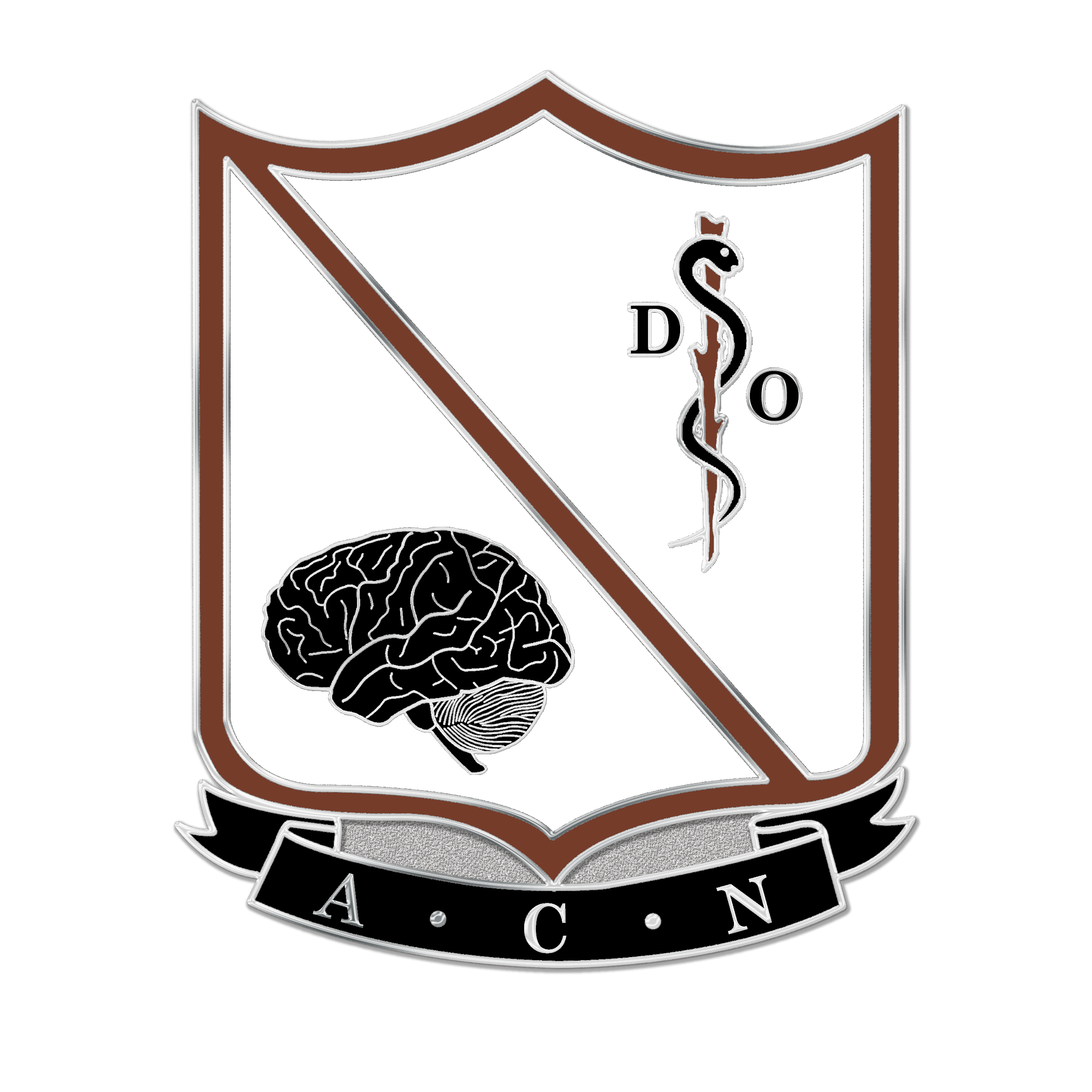The American College of Neuropsychiatrists
(An Osteopathic Institution)
By Floyd E. Dunn, D.O., F.A.C.N., F.A.A.M.D.
The one-time operation did help people who had genuine but not-officially-approved graduate training and wanted to have that training officially verified. But the A.O.A., the A.O.B.N.P. and the officials of the A.C.N. still have to deal with those occasional mavericks who apparently think that they can make their own rules.
At the Twenty-sixth Annual Meeting of the College at the Fontainbleau in Miami Beach, January 26-30, Dr. Floyd E. Dunn, our “Second-time-around” president, set up a “Development and Organization” Committee to work with the Study and Planning Committee, the Public & Professional Relations Committee, and the Membership Committee, giving his committee a two-fold charge: (1) To design and implement ideas and projects through which we can help both physicians and the laity better to understand our specialty, its needs, its aims and its limitations; (2) To provide ideas and methods of strengthening our ranks quantitatively and qualitatively. The first effort of this committee was to set up in joint sponsorship with the Kansas City College what would now be called a Continuing Medical Education Project: a Symposium on Clinical Hypnosis open to all licensed physicians, scheduled for March 22, 23, and 24, at the Kansas City College with a faculty which included Leslie M. LeCron (psychologist), Eric Wright, M.D., James Rowland, D.O., and Floyd E. Dunn, D.O.
The second event sponsored by this new committee on Development and Organization was to set up for the state convention in Iowa, March 23, 24, and 25, a program on ‘Neurology for the Family Physician.’ This program comprised almost the entire continuing education sessions of that meeting, and the ‘faculty’ was composed of members of our College of Neuropsychiatrists. These two efforts were the beginning of what has grown into our “mid-year” continuing medical education session, and as Fleda Brigham later wrote to this author during her presidential year, perhaps the greatest accomplishment of the committee. But the committee also did the groundwork that resulted in the joint sessions with the College of Pediatricians and with the College of General Practitioners, which were features of the Twenty-seventh Meeting of the College in New Orleans September 30 through October 3, 1963, where our headquarters were the gracious old Hotel Monteleone.
Since that time, the College has tended to follow this precedent and whenever we can arrange joint sessions with out fellow D.O.’s in other disciplines. Our closest interrelationships have been, through the years, with the Family Physicians, with the Pediatricians, and with the Internists. Although the Committee on Development and Organization faded away after three years of active functioning its seeds in interdisciplinary sessions took root and our College, more than any of the other specialty disciplines, continues to welcome opportunities “to develop projects through which we can help both physicians and laity better to understand our specialty, its needs, its aims, and its limitations.”
There needs to be a short notice in our history at this point to summarize our conflict with the Internal Revenue Service anent our existence as a tax-exempt organization. Not to bore readers with details (anyone interested in learning about the pettifogging, narrow minded and often stupid attitudes of certain of the officials in the I.R.S. just phone the author for a detailed fill-in), it is enough to write here that through the efforts of this author, plus those of our hard-working beloved “Syd” and his attorney with a few bits of advice from the A.O.A., we were able to satisfy the Internal Revenue people. We altered the wording of our articles of incorporation so that they state: (a) This Corporation is organized and will be operated exclusively for Educational and Scientific purposes and in furtherance of these purposes and not for other purposes. (b) Notwithstanding any of the aforementioned purposes and powers, the American College of Neuropsychiatrists, after payments of all debts and obligations will be distributed for Educational, Scientific, and Charitable purposes or to organizations organized for those purposes and exempt from Federal Income Tax as Organizations described in Section 501 (c) (3) of the Internal Revenue Code. This is exactly how we had to spell it out even though that is how we had been operating since our incorporation in 1938 and they knew it. Oh well, that was twenty years ago; now it is 1984 and Big Brother is really watching us!!
